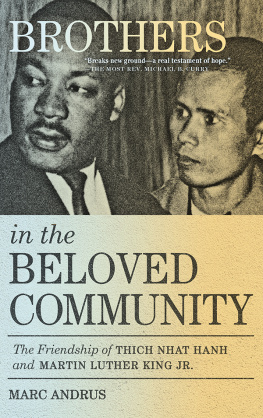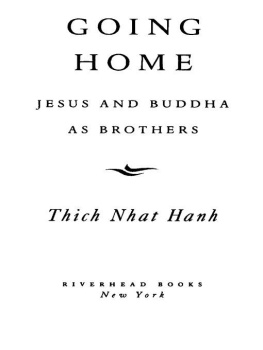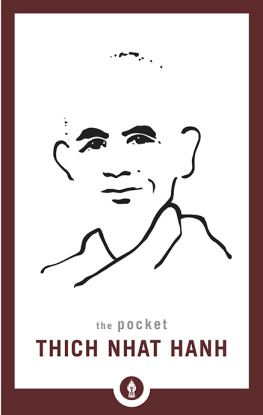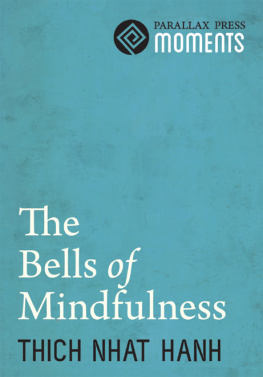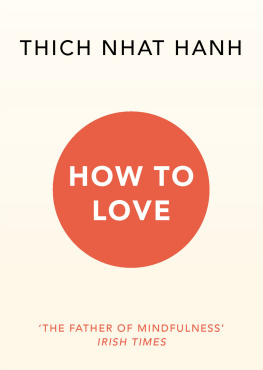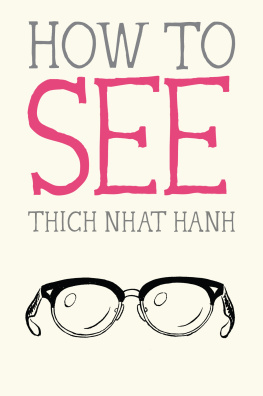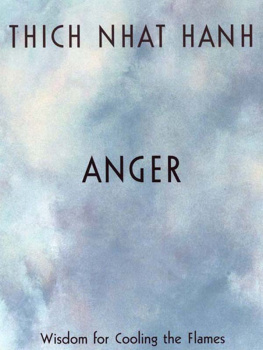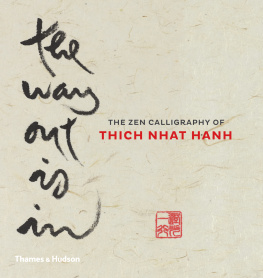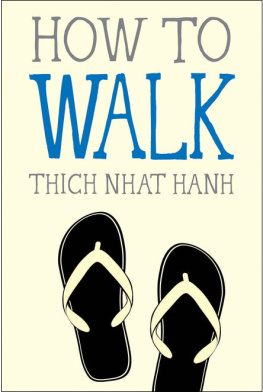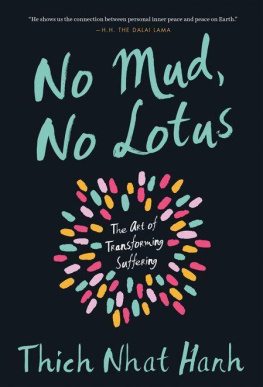Marc Andrus - Brothers in the Beloved Community The Friendship of Thich Nhat Hanh and Martin Luther King Jr.
Here you can read online Marc Andrus - Brothers in the Beloved Community The Friendship of Thich Nhat Hanh and Martin Luther King Jr. full text of the book (entire story) in english for free. Download pdf and epub, get meaning, cover and reviews about this ebook. year: 2021, genre: Politics. Description of the work, (preface) as well as reviews are available. Best literature library LitArk.com created for fans of good reading and offers a wide selection of genres:
Romance novel
Science fiction
Adventure
Detective
Science
History
Home and family
Prose
Art
Politics
Computer
Non-fiction
Religion
Business
Children
Humor
Choose a favorite category and find really read worthwhile books. Enjoy immersion in the world of imagination, feel the emotions of the characters or learn something new for yourself, make an fascinating discovery.
- Book:Brothers in the Beloved Community The Friendship of Thich Nhat Hanh and Martin Luther King Jr.
- Author:
- Genre:
- Year:2021
- Rating:3 / 5
- Favourites:Add to favourites
- Your mark:
- 60
- 1
- 2
- 3
- 4
- 5
Brothers in the Beloved Community The Friendship of Thich Nhat Hanh and Martin Luther King Jr.: summary, description and annotation
We offer to read an annotation, description, summary or preface (depends on what the author of the book "Brothers in the Beloved Community The Friendship of Thich Nhat Hanh and Martin Luther King Jr." wrote himself). If you haven't found the necessary information about the book — write in the comments, we will try to find it.
Marc Andrus: author's other books
Who wrote Brothers in the Beloved Community The Friendship of Thich Nhat Hanh and Martin Luther King Jr.? Find out the surname, the name of the author of the book and a list of all author's works by series.
Brothers in the Beloved Community The Friendship of Thich Nhat Hanh and Martin Luther King Jr. — read online for free the complete book (whole text) full work
Below is the text of the book, divided by pages. System saving the place of the last page read, allows you to conveniently read the book "Brothers in the Beloved Community The Friendship of Thich Nhat Hanh and Martin Luther King Jr." online for free, without having to search again every time where you left off. Put a bookmark, and you can go to the page where you finished reading at any time.
Font size:
Interval:
Bookmark:

Parallax Press
2236B Sixth Street
Berkeley, California 94710
www.parallax.org
Parallax Press is the publishing division of Plum Village Community of Engaged Buddhism, Inc.
Copyright 2021 by Marc Andrus
All rights reserved
Printed in Canada
Cover design by Katie Eberle
Text design and composition by Happenstance Type-O-Rama
All reasonable efforts have been made to obtain permissions for every photograph included in this book.
ISBN: 978-1-946764-91-1
Library of Congress Cataloging-in-Publication Data is available.
To Sheila, for whom the Beloved Community is her true and constant home
W hat would it be like to live in a place and time wherein humans experience the world as both full of meaningwith each person, each being, a plenitude of beingness, each full of infinite wonder and beautyand also as a world deeply interconnected? Such is not the world in which you and I were raised. Indeed, this enchanted world has been eroding for the last four hundred years. Today, when the depths of an individual being unfolds before me, and when the world shows its marvelous interrelated reality, I feel surprise, as it is such a contrast to the mechanistic, alienated world that is often our daily fare.
Brothers in the Beloved Community came to be because of several awakenings in my life over the last thirty years. If you have picked up this book, it seems probable to me that you may have shared these experiences, or at least some of them. Perhaps you have learned mindfulness from reading some of Thich Nhat Hanhs writings or by hearing him give one of his dharma talks. Or, perhaps Martin Luther King Jr.s life and witness have given you courage and hope for racial justice, or, you have listened, with tears in your eyes, to Representative John Lewiss last message to the world, a message in which he spoke of the Beloved Community.
Beloved Community is a resonant and mysterious phrase, whose meaning beckons to us, but the content of which is not immediately apparent. Let me tell you how I came to love and respect Thich Nhat Hanh and Martin Luther King Jr.and how I came to be committed to the Beloved Community that enlivened them. This story of discovery began while I served as a boarding school chaplain and moved forward in time to Alabama, California, and Vietnam. It is a story shining from two extraordinary lives with good news about how we might embrace a life more deeply connected and with capacity for transformation.
As a student in college, I walked back and forth each day between the agriculture campus, where I studied plants and soil, and the main campus, where I immersed myself in studying Eastern and African religions. Years later, browsing through the religion and philosophy section of a favorite bookstore, my attention gravitated to a slender paperback by an author I didnt knowThich Nhat Hanh. The book was the newly published Peace Is Every Step (1990). I bought the book and took it back to the high school campus where I worked as a chaplain. Once I set foot on the campus, carrying Peace Is Every Step, something remarkable happened. Students, faculty, women and men working in the dining roomso many peoplestopped me and asked me to tell them about this book. I concluded that we had a longing for peace and wanted to know about a book that offered guidance, a path to peace.
Not long after reading Peace Is Every Step, I learned that Thich Nhat Hanh was coming to give a dharma talk at the Washington National Cathedral. I took the metro into the city and made my way to the cathedral, joining the huge lines of people patiently waiting to get in. The cathedral was packed, but with an entirely new feel compared to the Christmas celebrations and sacred concerts I had attended there before. There was an energetic hush, a fullness of presence all around. Rather than clergy and choirs processing in to organ fanfare, there was one small person, Thich Nhat Hanh, seated on a cushion, quietly talking for about two hours. We were raptly attentive, hanging on every word in a connected, cohesive teaching discourse over that big chunk of time. The next year I went to hear Nhat Hanh again, this time at the Washington Hebrew Congregation. That sacred space also seats about five thousand people, like the National Cathedraland like the cathedral, it was absolutely packed. That dharma talk, in 1993, was the last time I saw Thich Nhat Hanh in person until I made a pilgrimage to Vietnam as part of the research for this book in the spring of 2019that journey is a story for later.
The Thich Nhat Hanh I met through Peace Is Every Step and those two dharma talksas well as subsequent books and other dharma talks I listened to in videoswas the monk who taught the world mindfulness, as a Time magazine headline described him. Helping millions of people learn to tend the good seeds in their souls through compassionate awareness is a great gift to humanity. I did not guess, however, that Thich Nhat Hanhs project of making Buddhist teachings on mindfulness, peace, and compassion available to broad swaths of the worlds population was part of a bigger project, part of his commitment to the Beloved Community.
I met Martin Luther King Jr. about a decade after reading Thich Nhat Hanhs Peace Is Every Step. In October 2001, I was elected bishop suffragan (an auxiliary bishop) for the Episcopal Diocese of Alabama, and my family and I moved to Birmingham in early 2002. I am a SouthernerI call myself a pan-Southerner in fact. I was raised in East Tennessee (yes, the three divisions of the state matter) by a North Carolinian mother and a Cajun father, and I lived in Virginia for twenty years. But actually moving to and living in the Deep South was something new to me.
For one thing, the history of the American civil rights movement was everywhere present, enduring in virtually every square foot of the city of Birmingham where we lived. The diocesan offices where I went to work each day were named Carpenter House, after C. C. Carpenter, who served the diocese as bishop for thirty years, a long episcopacy that spanned the crucial years of the civil rights movement of the 1950s and 1960s. In fact, Carpenter was one of the clergymen addressed by the Rev. Dr. Martin Luther King Jr. in his landmark Letter from a Birmingham Jail in 1963. King chose those seven white members of the clergy as the ostensible audience of his letter because they espoused gradualismthe idea that, yes, there should be equal rights for Blacks, but not yet.
But while Bishop Carpenter was urging gradualism, others on his staff were working for civil rights. When I met Ambassador Andrew Young a number of years after our move to Birmingham, he asked me if an Episcopal laywoman in Birmingham, Peggy Roop, was still alive. I was startled that she was the first and only person Young asked about when he learned that I was a bishop from Alabama. Peggy Roop, a white woman who worked for the diocese as a coordinator of youth ministry in the 1960s, had opened, clandestinely, the very office in which I worked for important meetings between civil rights movement leaders and local white business people. Roop was in her early twenties then; her resolve and courage had deeply impressed Young. I was glad to tell him that she was alive and thriving. She was also quite modestI had never heard this great story about her.
Other, similar stories of justice work by civil rights veterans became known with time, adding dimension to this remarkable place of living history, and there were material reminders as well. Within walking distance of Carpenter House was the Sixteenth Street Baptist Church, where four Black girls were killed by a bomb detonated on a Sunday morning in 1963. Close to their church now stands the Birmingham Civil Rights Museum. Nearby is a park with statues that honor the young students who confronted police in nonviolent protest as part of the Childrens Campaign. There are the students, arrested mid-stride in bronze, and there also are the snarling dogs and the police with high-pressure water hoses. And these are just the physical markers in Birmingham itself; the whole state is covered with reminders of the civil rights movement.
Next pageFont size:
Interval:
Bookmark:
Similar books «Brothers in the Beloved Community The Friendship of Thich Nhat Hanh and Martin Luther King Jr.»
Look at similar books to Brothers in the Beloved Community The Friendship of Thich Nhat Hanh and Martin Luther King Jr.. We have selected literature similar in name and meaning in the hope of providing readers with more options to find new, interesting, not yet read works.
Discussion, reviews of the book Brothers in the Beloved Community The Friendship of Thich Nhat Hanh and Martin Luther King Jr. and just readers' own opinions. Leave your comments, write what you think about the work, its meaning or the main characters. Specify what exactly you liked and what you didn't like, and why you think so.

